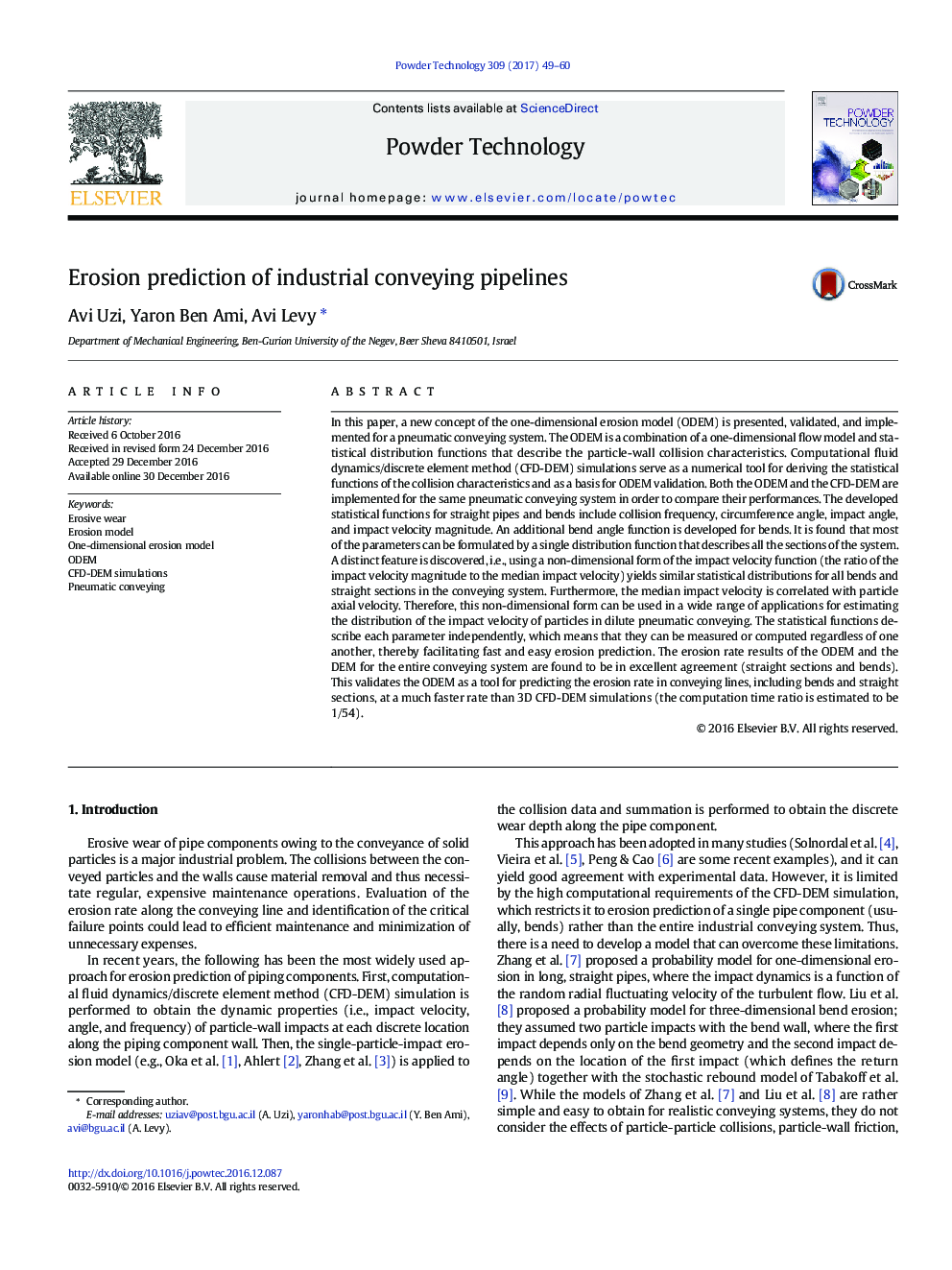| کد مقاله | کد نشریه | سال انتشار | مقاله انگلیسی | نسخه تمام متن |
|---|---|---|---|---|
| 4910737 | 1427732 | 2017 | 12 صفحه PDF | دانلود رایگان |
- ODEM is presented, validated, and implemented for a pneumatic conveying system.
- ODEM is a combination of a 1D flow model and statistical distribution functions.
- Particle-wall impact characteristics are derived as statistical functions.
- The impact characteristics yield similar distributions at different velocities.
- ODEM is a valid tool for erosion rate prediction and is much faster than 3D CFD-DEM.
In this paper, a new concept of the one-dimensional erosion model (ODEM) is presented, validated, and implemented for a pneumatic conveying system. The ODEM is a combination of a one-dimensional flow model and statistical distribution functions that describe the particle-wall collision characteristics. Computational fluid dynamics/discrete element method (CFD-DEM) simulations serve as a numerical tool for deriving the statistical functions of the collision characteristics and as a basis for ODEM validation. Both the ODEM and the CFD-DEM are implemented for the same pneumatic conveying system in order to compare their performances. The developed statistical functions for straight pipes and bends include collision frequency, circumference angle, impact angle, and impact velocity magnitude. An additional bend angle function is developed for bends. It is found that most of the parameters can be formulated by a single distribution function that describes all the sections of the system. A distinct feature is discovered, i.e., using a non-dimensional form of the impact velocity function (the ratio of the impact velocity magnitude to the median impact velocity) yields similar statistical distributions for all bends and straight sections in the conveying system. Furthermore, the median impact velocity is correlated with particle axial velocity. Therefore, this non-dimensional form can be used in a wide range of applications for estimating the distribution of the impact velocity of particles in dilute pneumatic conveying. The statistical functions describe each parameter independently, which means that they can be measured or computed regardless of one another, thereby facilitating fast and easy erosion prediction. The erosion rate results of the ODEM and the DEM for the entire conveying system are found to be in excellent agreement (straight sections and bends). This validates the ODEM as a tool for predicting the erosion rate in conveying lines, including bends and straight sections, at a much faster rate than 3D CFD-DEM simulations (the computation time ratio is estimated to be 1/54).
82
Journal: Powder Technology - Volume 309, March 2017, Pages 49-60
